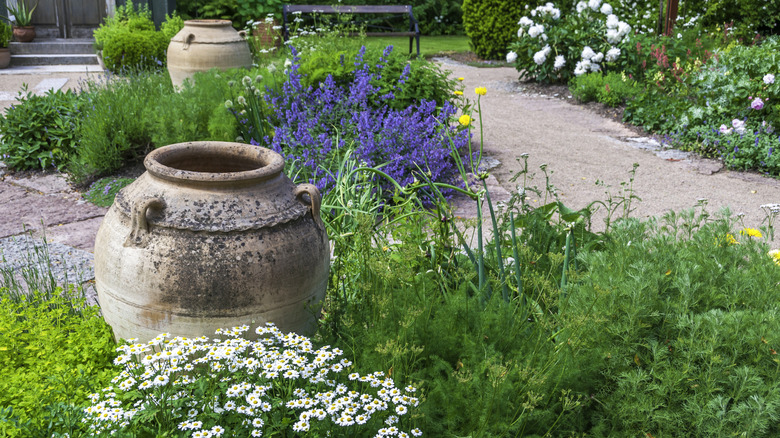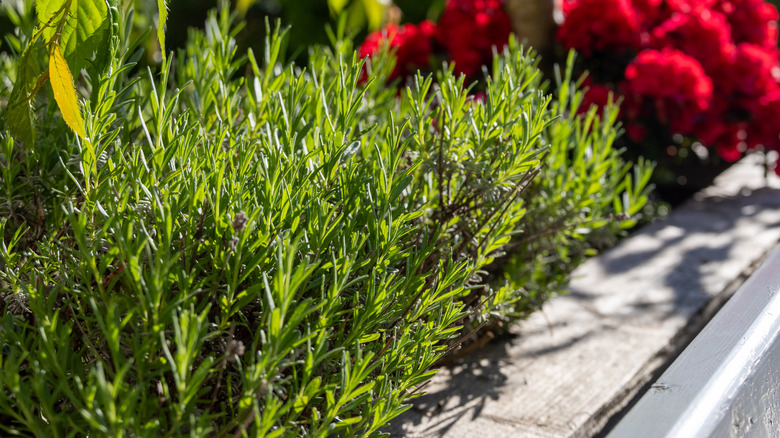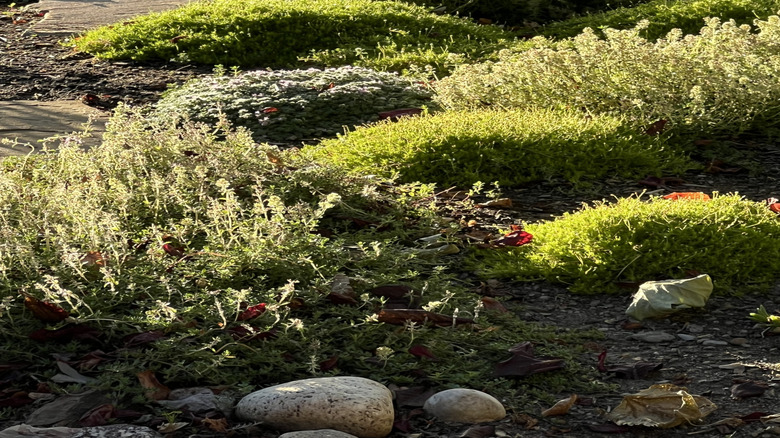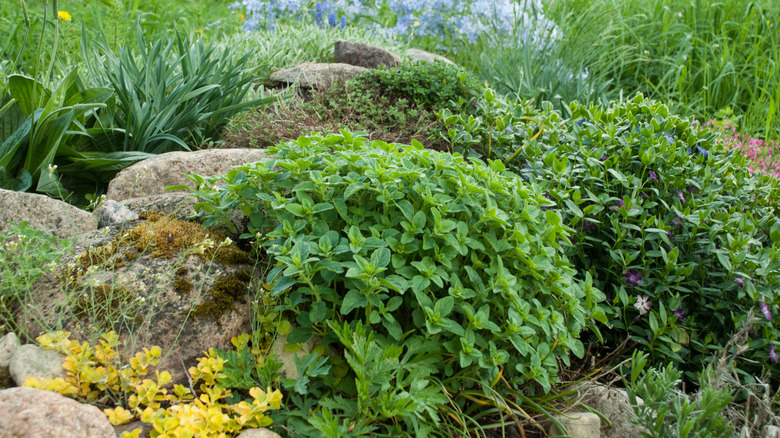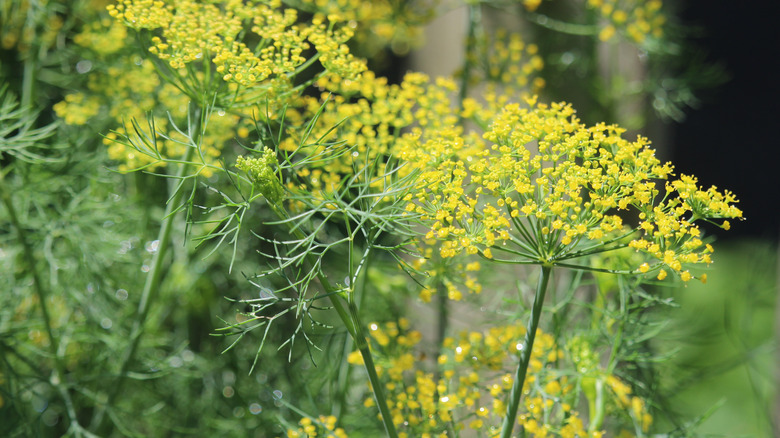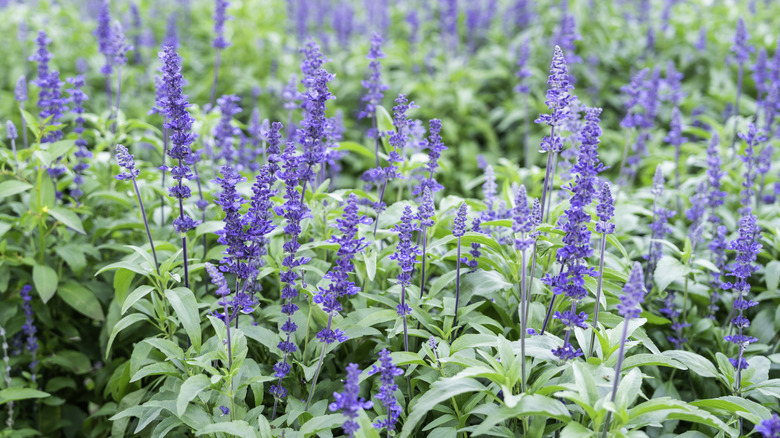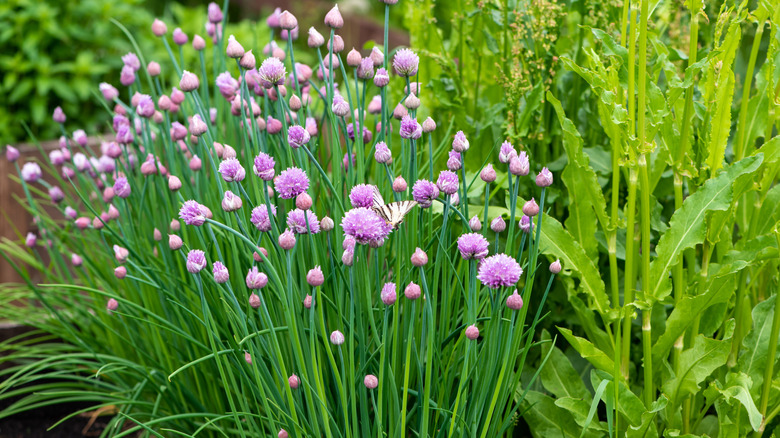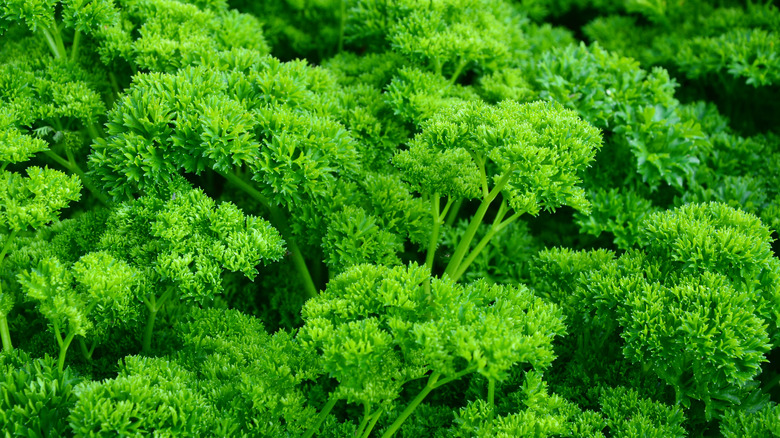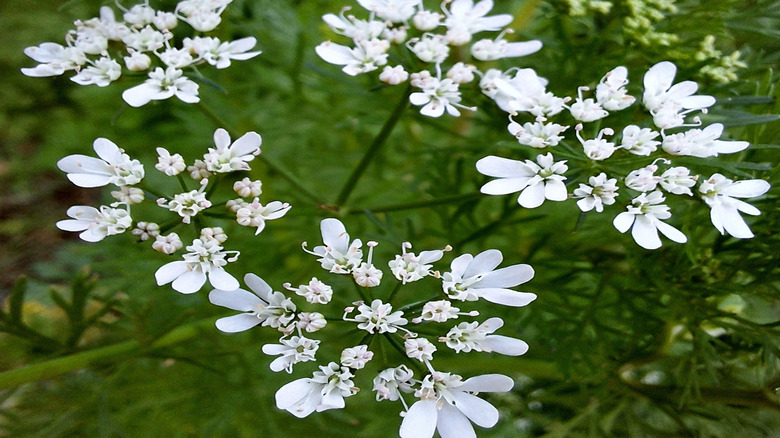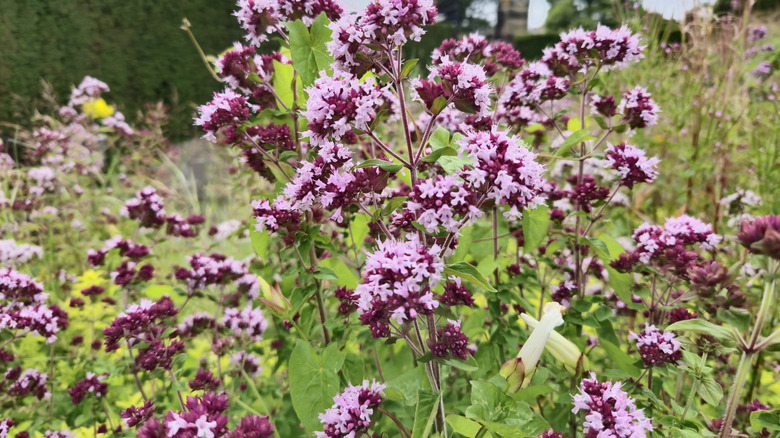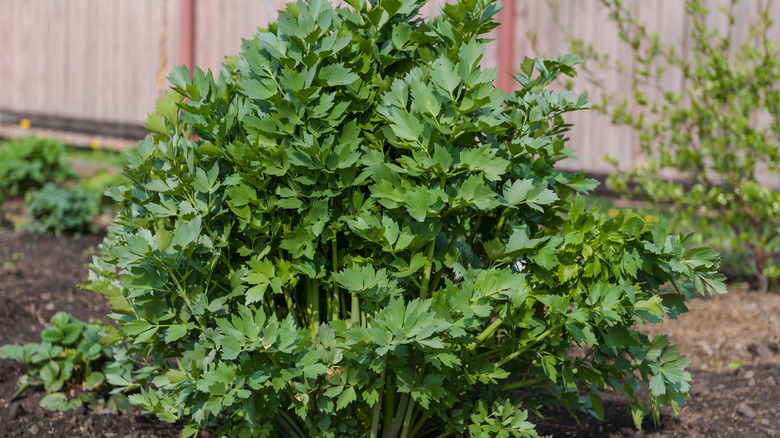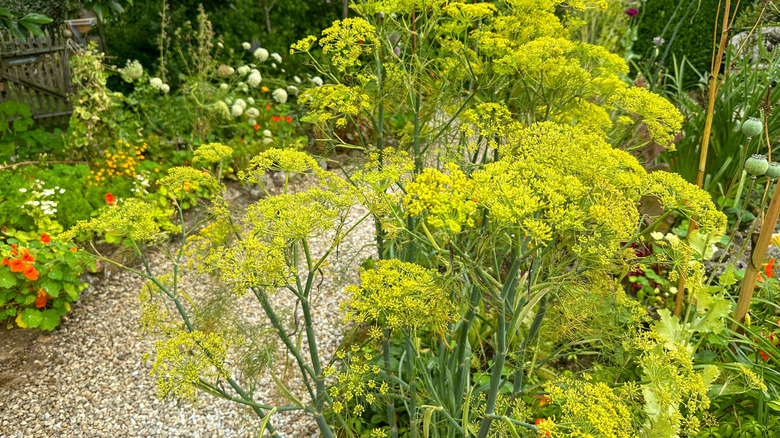12 Popular Herbs Make The Perfect Filler Plants For Your Garden
If you've ever admired the beauty of a gorgeous cottage garden, you might have spotted different herbs growing among the pretty flowering perennial plants, and there's a good reason for this. Herbs make the perfect filler plants to dot around your garden wherever you find an empty space. They're ideal for this because they're easy to grow and don't really demand all that much attention, making herbs the perfect type of plant to grow if you don't have a green thumb. You just need to match the growing environment with the needs of each species and then let the herb do its thing while adding some delightful color and aromas to your yard.
Keep in mind that some herbs are annuals and need to be replanted each year, while others are perennials that you can plant once and enjoy for many years to come. This should give you a clue as to which herbs you want to plant in different areas of your garden. For instance, you'll want to plant perennial herbs such as rosemary and thyme among other permanent shrubs in your yard. On the other hand, annual herbs could help to fill in those spaces once your spring-flowering bulbs have finished their display. So, don't relegate those attractive herbs just to your small kitchen garden or give them a supporting role in your veggie patch. Instead, let them shine among the other stars in your garden to add both color and diversity to your yard.
Rosemary
Apart from being a delicious herb that can add some intense flavor to your cooking, rosemary (Salvia rosmarinus) is also an attractive garden plant. The lovely dark green foliage blends beautifully with the colorful blooms in any flower garden. It's a perennial and prefers full sun and a fairly dry environment, making it a perfect match for flowers such as black-eyed Susan, dianthus, and coneflowers. When your rosemary shrub blooms in early spring, it will also bring pollinators to your yard. Plus, the aromatic stems make a great addition to cut flower arrangements.
Thyme
Common garden thyme (Thymus vulgaris) is another perennial that is perfect for planting around an ornamental garden. It's a bushy shrub that only grows to a height of around 12 inches, making it perfect for planting around the borders of a flower garden. This attractive herb also prefers a sunny spot and is both drought and frost-tolerant. As is the case with many different herbs, it can be pruned and shaped to form a nice low hedge along a path or walkway. You'll love the sweet aroma as you brush the foliage when walking past.
Oregano
Oregano (Origanum vulgare) is a low-growing perennial herb that makes the perfect ground cover around shrubs and flowers. As it spreads, it forms a dense mat of aromatic leaves that will help to crowd out weeds and keep the soil cooler. The tiny pink or white flowers appear in spring and summer and will attract hordes of pollinators to your yard. Oregano is also perfect for rock gardens as it will scramble happily over the stones and cover the ground with its lovely scented foliage. Give it a little trim from time to time to keep it lush.
Dill
If you want to add some billowy clouds of soft green to your garden, you might want to consider growing dill (Anethum graveolens) as a filler plant among your flowers. This aromatic herb grows as an annual and has an aroma reminiscent of aniseed or licorice. The lovely fern-like foliage adds a pretty aesthetic to your yard, and the umbels of yellow flowers in spring and summer will attract bees, butterflies, and even hummingbirds. Dill is also a larval host to the black swallowtail butterfly, which is another good reason to combine it with other plants in your yard.
Common sage
Common sage (Salvia officinalis) makes an attractive filler plant for ornamental gardens with its soft gray-green foliage and the interesting purple flower spikes that appear throughout the warmer months. These can reach heights of 2 feet, which makes sage perfect for adding some interest to the back of borders or dotted among other pretty spring and summer flowers such as zinnias, cosmos, and dahlias. The flowers will also help to attract bees and butterflies, and this herb is both rabbit and deer-resistant. Sage is also drought-tolerant, so it does well in drier spots of the yard.
Chives
Chives (Allium schoenoprasum) have always been a popular choice for rose gardeners because they make a gorgeous filler plant under these colorful bushes. Their green strappy leaves are a great contrast to the thorny stems, and the purple globe-like blooms add some additional interest during summer. It's said that the slightly pungent aroma helps to deter common rose pests such as aphids. These attractive plants are also ideal for growing along borders, and the clumps can easily be divided when you want additional plants for other spots in your yard.
Curly-leaved parsley
To add some interest to your garden beds, curly-leaved parsley (Petroselinum crispum) makes an excellent filler plant around flowering shrubs such as azaleas, gardenias, and camellias, because it doesn't mind growing in acidic soil. Strictly speaking, curly-leaved parsley is a biennial plant, which means that it completes its growth cycle over two years. However, it's commonly grown as an annual except in regions with a milder winter climate. If it does survive winter, it will produce umbels of green or yellow flowers that attract pollinators in the spring.
Basil
While you might be familiar with sweet basil (Ocimum basilicum) with its aromatic leaves and tall white flower stems, there are other varieties that can make an interesting addition to your garden. For example, Thai basil (Ocimum basilicum var. thyrsiflorum) has similar aromatic leaves but gorgeous purple flower spikes. Then, there's also Greek basil (Ocimum minimum), which is more compact with much smaller leaves. All of these make perfect filler plants around garden beds that get adequate amounts of water on a regular basis. Of course, the flowers will attract pollinators to your yard, which is another bonus.
Cilantro
If you have a meadow-like flower garden, you'll find that cilantro (Coriandrum sativum) will fit right in as an annual filler plant with its soft green leaves that look similar to parsley, and its attractive white or pink flower clusters in summer, which resemble the blooms of Queen Anne's lace. Apart from looking pretty, cilantro also attracts butterflies and even predatory insects to your yard. This makes it a useful herb to add to your pollinator garden as well. When it reaches around 6 inches in height, prune cilantro to keep it healthy and happy.
Marjoram
Just like cilantro, marjoram (Origanum majorana) can add some pretty color to your flower garden. You can plant it as an annual filler in northern regions, but it can grow into a small shrub in warmer areas. The attractive pink or white tubular flower clusters are highly decorative and will attract bees to your yard. It doesn't mind fairly dry soils, making it perfect for pairing with some of your summer flowers or growing in your rock garden. As a bonus, marjoram is one of those herbs you can grow to help block out weeds in your garden.
Lovage
If you're looking for a tall-growing herb for the back of your ornamental beds, you might want to consider adding some lovage (Levisticum officinale) as a filler plant. This herbaceous perennial can grow to heights of 4 feet with attractive dark green foliage and edible yellow flowers that taste a little like celery. When in bloom, lovage will also attract butterflies to your garden. The plant may die back in winter but should regrow once the weather warms up again. As a bonus, all parts of the plant are edible, including the leaves, flowers, seeds, and roots.
Fennel
Fennel (Foeniculum vulgare) is another quite impressive tall herb that's perfect for the back of a garden bed as a filler plant. It will add a touch of softness with its fine feathery foliage. It's somewhat similar to dill in that the leaves have a licorice or aniseed flavor. Fennel produces umbels of yellow blooms in summer, which are edible as well. This herb can grow to a height of 5 feet, so keep this in mind when growing it around your other plants. Like similar herbs, it's also a larval host for the swallowtail butterfly.
